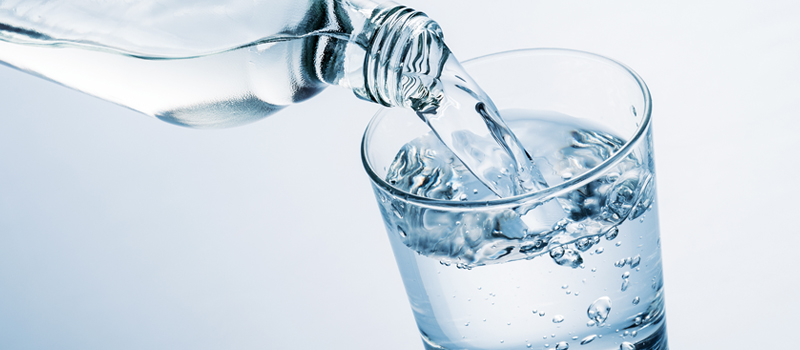We all want safe drinking water from our kitchen or bathroom faucets. But, is this water safe? When a home is on city water or has a private well, it is always a good idea to have the water tested occasionally for safety. If the water test shows a problem, you can take steps to have the water treated for family safety. There are several options to consider.
Getting a Water Filtering System
If you don’t trust city water systems and want to make sure the water is safe, even if you haven’t tested the water, you might want to purchase a free-standing water filtration system to install on the kitchen or bathroom counter. Check out theberkey.com for information on different sizes of water filters and which contaminants they remove from the water.
Testing A Home’s Water
If a home’s water system is getting its water from a private well the water should be tested once a year. Though city water is supposed to be safe, it may contain contaminants the testing does not cover or allow more contaminants than you want. To be safe, contact a local lab that does water testing. You can find the nearest lab by contacting the local water authority for information on independent local labs.
The lab may be in your town or in a neighboring town. This lab will be familiar with water quality in your area. They will do a thorough onetime water test and then recommend which tests should be done in the future and how often they should be done.
You can also find water testing kits at local home centres or you can find and purchase them online. They contain a package of strips treated to react to certain contaminants. If the contaminant is present, the strip will turn color. Be aware that home test kits are not 100% accurate and don’t test for all contaminants. They will catch major problems though.
What Are the Major Contaminants to Test For?
Nuisance Bacteria. They may not always be harmful, but they can add iron and sulfur to the water.
Disease-Causing Bacteria. Common bacteria are E. coli and coliform. Faecal coliform and faecal streptococci and others may be present.
Iron: Iron in the water may turn it orange or yellow and may cause clothing to be stained in the laundry. Sinks and toilets can be stained. Iron may cause water to have a bitter taste.
Manganese. This can make the water look black or purple and cause a bitter taste.
Hydrogen Sulfide or Sulfur. This makes water smell like rotten eggs and may indicate bacteria in the water.
Hard Water. Salt or calcium carbonate can cause this, and a water softener can help.
Lead. Lead can come from old plumbing components and is a dangerous neurotoxin.
Chlorine. This is used by municipalities to clean water systems which is good, but if too much is in your water it can cause health problems. It can make water smell and taste bad.
Fluoride: Municipalities may add fluoride for public health benefits, but too much can be bad for you. Now, most kinds of toothpaste already have fluoride added.
Other harmful elements that may be found in the water system include arsenic, viruses, mercury, pesticides, heavy metals, petroleum contaminants, pharmaceuticals, and more. A good water treatment system will remove all these contaminants from the family’s drinking and cooking water.
Is Bottled Water Safe?
People often think they can rely on bottled water to drink and not worry about their tap water at home. But is bottled water really safe? Unfortunately, bottled water is not well regulated at this time. Bottled water mostly comes in plastic bottles which leach chemicals into the water they contain.
The Right Filtration System for Each Home
There are different types of water filtering systems.
A whole house water filtering system requires a plumber to install. It is more expensive because it treats all the water coming into a home. There are homes and water conditions that make this system appeal to homeowners. These systems mainly remove sediment and rust from incoming water. The homeowner needs to buy a more expensive system to filter out other contaminants.
Under-sink water filter systems are installed under the counter in a kitchen or bathroom. This system attaches to the cold-water pipe and has an additional water dispenser next to the sink. This system requires a little plumbing knowledge to install. It does not take up counter space. It does take up a good part of the cabinet space. This system can handle a large amount of water. It requires a hole drilled in the counter.
Faucet mounted water filters are attached directly to the faucet. They supply more filtered water than a filtered pitcher. You can switch to unfiltered water or filtered water. This adds bulk to the faucet and may get in the way of tasks like washing dishes. These may not work for all facets.
Countertop-mounted water filtering systems come in several varieties. Some attach to the faucet, replacing the aerator with tubes. The water goes through the filter and back to the faucet. Then there are countertop filtering systems that are self-contained with water poured into the top compartment of the unit that filters down to the bottom water container with a tap to dispense water.
These countertop water filter units come in different sizes and water capacities. One company has seven different sizes. One model is 19 ½ inches tall and 8 inches in diameter. It can filter four gallons of water an hour and can store 2.25 gallons of purified water in its lower chamber. One advantage of countertop water filtering systems is that they are portable and don’t require electricity. Their filters are easily removable to change for new ones.
There are a style and type of water filtering system for every home. Each homeowner needs to decide which system will work best to give them a steady supply of safe water for their family.

